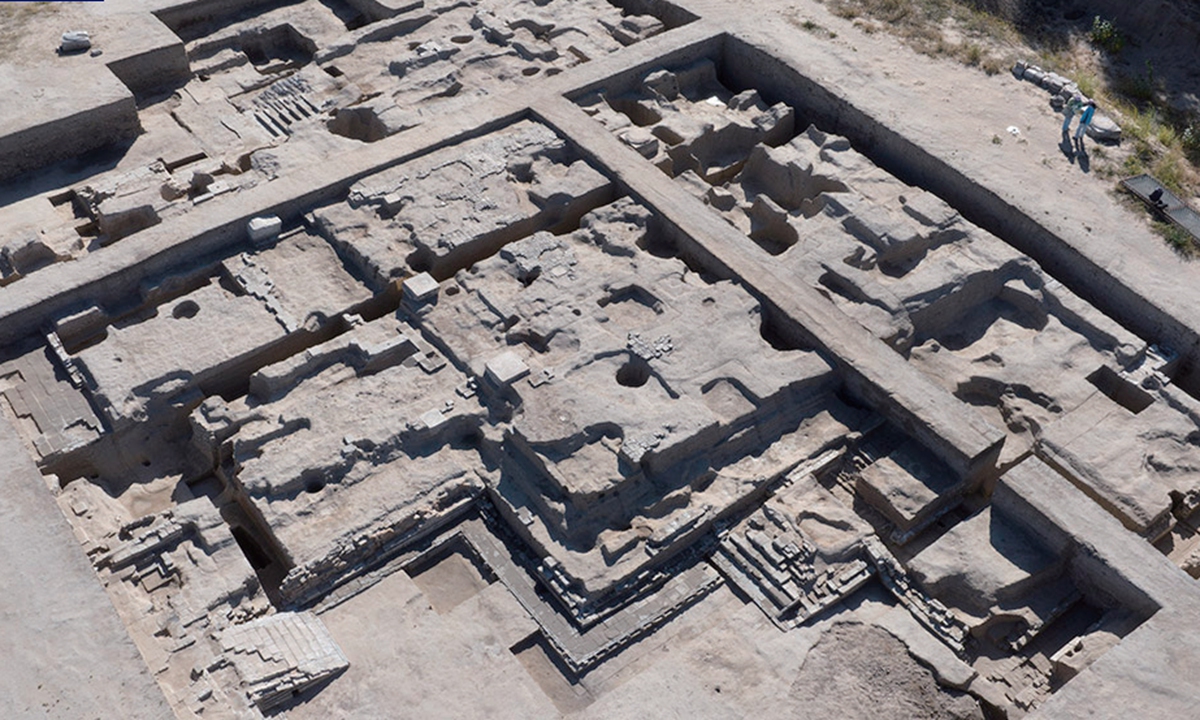
The Liao Dynasty Shangjing Ruins in Baarin Left Banner, North China's Inner Mongolia Autonomous Region Photo: VCG
Excavation sites reflecting ancient political power and a rare offshoot Christian sect in Northwest China's Xinjiang Uygur Autonomous Region are among the top six new archaeological discoveries in China in 2023, as they were unveiled by the Chinese Academy of Social Science (CASS) in Beijing on Tuesday.
Covering a time span from 70,000 years ago to China's Khitan or Qidan era Liao Dynasty (916-1125), the six findings awarded at a forum on Tuesday by CASS together with two other institutions were highlighted by the Mengxihe Site in Ziyang city, Southwest China's Sichuan Province.
Dated back to the Paleolithic Age around 60,000 to 70,000 years ago, the Mengxihe Site has provided new evidence allowing experts to better understand the complexity of primitive human beings and trace the direct ancestry of the people of Asia.
In addition, "the discovery of a rich number of various functional stone tools also provided archaeologists with more research materials to conduct Paleolithic Age research in southern China," noted Professor Wang Youping from Peking University on Tuesday.
Two Neolithic sites are the Qujialing site in the city of Jingmen, Central China's Hubei Province, where China's earliest known water conservancy project from 5,100 years ago was discovered, and the 3,000-year-old Keqiutou ruins in Pingtan, East China's Fujian Province, known for the origins of Austronesians.
One finding shows that Nestorianism, a branch of Christianity that originated in present-day Syria and was referred to as Jingjiao in ancient Chinese documents, was once popular in China.
In 2023, over 1,000 cultural relics were unearthed from a Nestorian Church in Turpan, Northwest China's Xinjiang. A total of 186 fragments of murals were unearthed at the site, according to local media outlet Xinjiang Daily, some of which are coated with gold powder or gold foil.
"The unearthed mural fragments unearthed in Xinjiang have a style and used techniques that are related to Buddhist murals," Luo Jia, a Chongqing-based mural and statue archaeologist, told the Global Times, adding that the discovery shows the mutual learning that took place among multiple cultures since ancient times in Xinjiang.
Other two awarded projects include the Qingjian Zhaigou Ruins from the Shang Dynasty (c.1600BC-1046BC) in Northwest China's Shaanxi Province, and the Liao Dynasty Shangjing Ruins, located in Baarin Left Banner, North China's Inner Mongolia Autonomous Region. The former is known as an important political center for the Shang and latter the location of the imperial palace for the Liao Dynasty.
Another seven projects were shortlisted, including a Shang Dynasty noble cemetery in a town center in Zhengzhou, Henan Province, and Bronze Age ruins in Northwest China's Qinghai Province.
In addition, the Lake Bogoria Paleolithic site in Kenya was also selected as the best new foreign archaeological discovery in 2023. The cross-national project was jointly conducted by the Henan Provincial Institute of Cultural Relics and Archaeology, the Luoyang Archaeological Research Institute, and the National Museum of Kenya.
URL: https://www.seeglobalnews.com/read-3120.html